Febrile seizures (previously known as febrile convulsions) are usually associated with fever in young children. Febrile seizures are not epilepsy and are relatively common, affecting about 3 in every 10 children.
With high temperature in babies and children, a seizure may follow. This happens mostly in infancy, but it can occur up to 5 years of age and febrile seizures may run in families.
Usually, the fever is due to infection such as flu, ear infection, chickenpox, urinary tract infections (UTI’s) or other common infectious illness in childhood. More rarely it may be due to more serious infection, so febrile seizures need to be medically checked for underlying cause.
There are 2 types of febrile seizures, simple and complex.
- Simple febrile seizures
These are the most common type in which the child has generalised tonic clonic seizures. These seizures involve the whole body where the child will go rigid before having jerking (convulsive) limb movements. The child may be incontinent and may also vomit or drool. Consciousness is lost and the seizure typically lasts for under 5 minutes (so timing the seizure is important). They typically do not recur within 24 hours. Afterwards the child may be sleepy. - Complex febrile seizures
These may be more prolonged and can last over 15 minutes, and they may recur within a 24 hour period of illness or fever. They may affect only one part or side of the body (focal), and may affect awareness, with staring or stopping activity. This type is uncommon.
Febrile status epilepticus is a febrile seizure which lasts or repeats for longer than 5 minutes and this is a medical emergency. Emergency medication may be prescribed for children who have had febrile status epilepticus previously, or who are at risk of this.
When does the child need to go to hospital?
If it is a child’s first febrile seizure they will need to be assessed at hospital, even if the seizure has stopped. This is to see if there is a cause for their fever, and test for any more serious infection or illness. The child will also need prompt medical attention if the seizure is prolonged (over 5 minutes) as this is a medical emergency. The child will also need to go to hospital if they are having any difficulties with breathing or have not woken from the seizure.
Tests
At the hospital the medical team will take a history, a description of the seizure and what happened, and other tests may include a physical exam, blood tests and urine tests. A lumbar puncture may be performed if there is concern about more serious infection of the brain or nervous system. EEG is not normally needed but may be used if the seizure is focal, prolonged or there are other signs on examination, or to check for epilepsy.
The medical team may investigate to see if the child has a more serious underlying illness such as meningitis or encephalitis, and to either rule out any such causes, or treat if necessary. Treatment with epilepsy medication is not normally required for febrile seizures as they are not considered to be epilepsy.
Management
While febrile seizures are not epilepsy they are managed much like epileptic seizures. The medical team will advise parents on febrile seizure management and how to manage fever. Sometimes emergency medication will be prescribed to administer in the event of febrile status.
Outlook
For most children with febrile seizures the outlook is excellent overall, and they don’t continue to have seizures with fever as they get older, or need any treatment.
The risk of going on to develop epilepsy is still quite low, about 1 in 50 for simple febrile seizures, compared to 1 in 100 for a child without febrile seizures.
The risk may increase with complex febrile seizures (1 in 20) or with prolonged febrile seizures (febrile status), repeated febrile seizures, and family history of epilepsy.
Some children who develop certain epilepsy syndromes may have had a history of febrile seizures, but the majority of children with febrile seizures outgrow this condition with no further effects.
Further Information
- Guidance on febrile seizures can be found by visiting the HSE website
- Information on managing febrile seizures and the do's and don'ts can be found by visiting the NHS website
- St. John's Ambulance service also has useful information on putting a baby in the recovery position - you can find out more by visiting the St. John's Ambulance service website
- Our colleagues in the Epilepsy Foundation also have a resource on Febrile seizures which can be found by visiting the Epilepsy Foundation website
